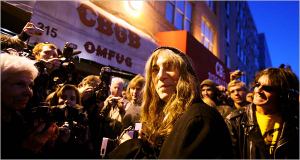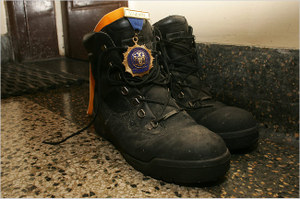The plan is the
latest step in an effort to bring order to a hodgepodge of some 137
programs citywide with varying admissions practices that critics have
said allowed for favoritism and discrimination.
The test, the
Otis-Lennon School Ability Test, is published by Harcourt Assessment of
San Antonio. The assessment of classroom performance is called the
Gifted Rating Scales, a measurement system also published by Harcourt.
The new admissions standards apply to programs for gifted children in
prekindergarten through second grade. The application process for the
2007-8 year will begin next month. In elementary schools citywide,
there about 22,000 children in gifted programs.
The test, known
as theOlsat, is widely used by school districts nationally. It has four
components — verbal comprehension; verbal reasoning; figural reasoning,
which measures nonverbal skills using pictograms; and quantitative
reasoning. Students receive a total score and subscores.
The
Gifted Rating Scales, or G.R.S., measures ability in six areas:
intellectual, academic, motivational, creative, leadership and artistic
talent. City education officials said that Harcourt had proposed that
schools give two-thirds weight to the test and one-third to the ratings
in admissions decisions, but that the details remained to be worked
out.
Dona Matthews, the director of the Center for Gifted Studies and Education at Hunter College, called the Olsat “a good, tried and true test.”
“It has been around for a long time and has solid reliability and validity,” she said, “and it is tied to school success.”
But
while she praised the city’s Education Department for using multiple
criteria for admissions, Ms. Matthews said she had some reservations
about the G.R.S. because of the possibility of inconsistency.
“Teachers
vary tremendously in how good they are in making this sort of
assessment,” she said. “A lot of highly gifted kids are not teacher
pleasers. Teachers don’t like them, and they don’t necessarily give
them good ratings on scales like that.”
Ms. Matthews said she
was especially troubled by Harcourt’s proposal to assign a set
percentage weight to the ratings. Instead, she urged the city to use a
sort of sliding scale. A student scoring, say, above the 98th
percentile on the test might gain admission to a program while those
between the 90th and 98th percentiles would be judged further on their
ratings.
City education officials said the new admissions process
would have controls built in so that any large discrepancy between the
test score and the classroom rating would generate additional
examination.
The officials also said that Harcourt, as part of a five-year $5.3 million contract, would provide training for educators.
Officials
also said that city translators would make the test available in
Spanish, Urdu, Haitian Creole, Russian, Chinese, Arabic, Bengali and
Korean.




